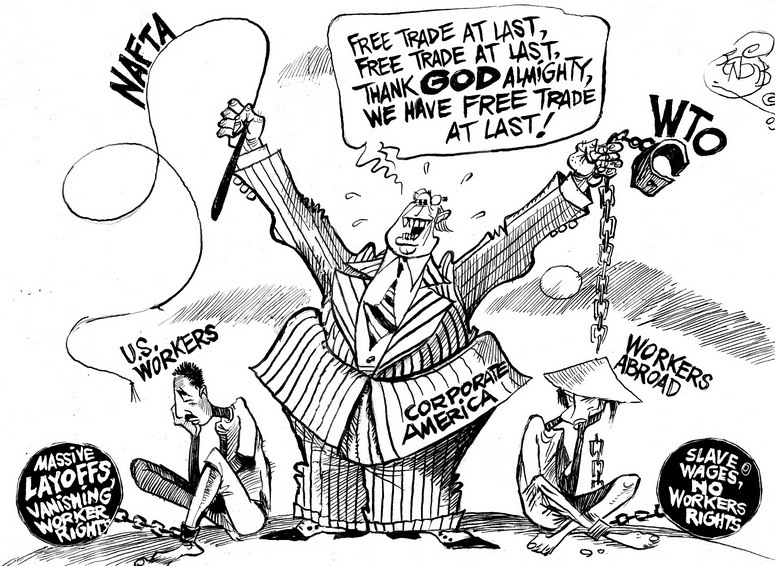The Economist wonders: A few years ago a wise pollster—pondering how labels like left-wing and right-wing have been scrambled by globalisation—came up with a different way to sort voters in Western democracies. Electorates, he suggested, broadly divide into two groups, one of which sees change and the outside world as a threat, and a second which takes a more optimistic view, looking for opportunities to harness global forces and turn them to good ends. The pollster, Stefan Shakespeare of YouGov, calls these two camps “Drawbridge Up” and “Drawbridge Down” people.
President Barack Obama was mugged by the Drawbridge Up bit of America, or at least by its elected representatives. A large majority of Democrats in the House of Representatives, joined by hard-right Republicans, voted to stall (and potentially kill) his hopes of reaching a big new free-trade pact between America and 11 other Pacific Rim nations, the Trans-Pacific Partnership (TPP). The Senate has already passed a bill that would allow Mr Obama to press ahead with TPP, and the House may return to the question as early as Tuesday.
Reflecting how trade scrambles partisan positions, Mr Obama is strongly supported by Republican leaders in Congress and their business allies. But Republicans are sufficiently divided that without substantial backing from moderate Democrats, TPP cannot happen.
Opposition to the president’s trade agenda involves an odd alliance between Democrats who distrust global trade and Republican hardliners who distrust Mr Obama and resent being asked to give him more authority to do anything. Some hard-right members of Congress go further, accusing the president of plotting to use TPP to rewrite immigration laws and regulate the economy in the name of fighting climate change (despite promises from Republican leaders that Congress can block such power-grabs). TPP’s Future

